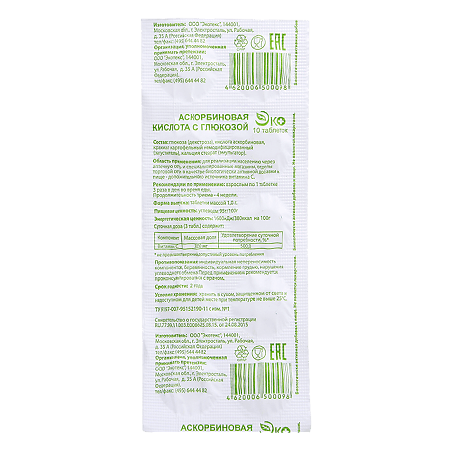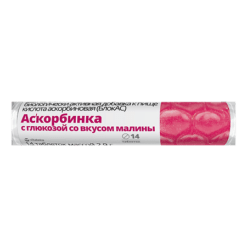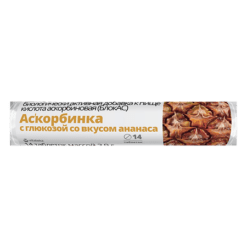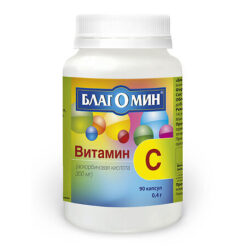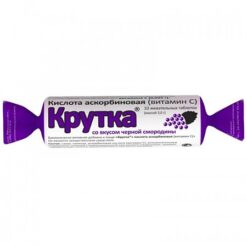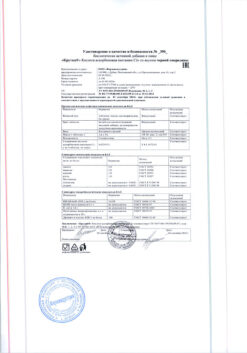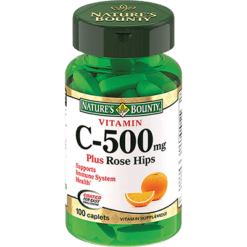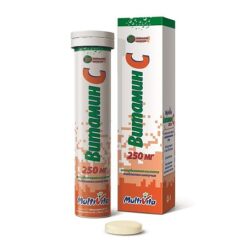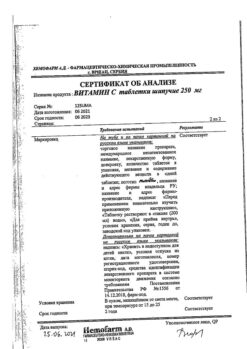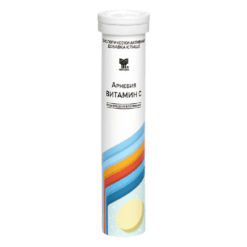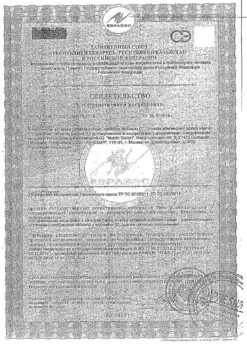No products in the cart.
Ascorbic acid with glucose, tablets, 10 pcs.
€0.64 €0.58
Description
Ascorbic acid with glucose is a vitamin, has a metabolic effect, is involved in the regulation of redox processes, carbohydrate metabolism, blood coagulation, tissue regeneration, in the synthesis of steroid hormones; increases resistance to infections, reduces vascular permeability, reduces the need for vitamins B1, B2, A, E, folic acid, pantothenic acid.
Pharmacokinetics
Ascorbic acid is well absorbed mainly in the duodenum and jejunum. Within 30 min after administration ascorbic acid content in blood increases significantly, its intense uptake by tissues starts due to its initial conversion into dehydroascorbic acid, which has the ability to penetrate through cell membranes without energy expenditure and is quickly recovered in the cell. Intracellularly, ascorbic acid is defined in three forms – ascorbic acid, dehydroascorbic acid and ascorbigen (bound ascorbic acid).
The distribution among organs is uneven: it is abundant in the glands of internal secretion, especially in the adrenal glands, less in the brain, kidneys, liver, heart and skeletal muscles. Ascorbic acid is partially metabolized and excreted up to 90% by the kidneys in the form of oxalate, partially in the free form. Glucose is easily absorbed, the main pathways of metabolism are glycolysis and aerobic oxidation with the formation of carbon dioxide and water with the release of ATP and other macroergic compounds.
Indications
Indications
Hypo- and avitaminosis C.
The increased need for ascorbic acid (period of intense growth, pregnancy, lactation, increased physical activity, period of recuperation).
Composition
Composition
1 tablet contains:
active ingredients: ascorbic acid, glucose
excipients: potato starch, stearic acid.
How to take, the dosage
How to take, the dosage
Ingestion. Doses are given in terms of ascorbic acid.
Adults for prophylactic purposes – 50-100 mg/day, children – 25 mg/day.
Adults with therapeutic purpose – 50-100 3-5 times a day, children – 50-100 mg 2-3 times a day.
In pregnancy and lactation – 300 mg/day for 15 days, then 100 mg/day.
Interaction
Interaction
Ascorbic acid: increases the blood concentration of benzylpenicillin and tetracyclines; at a dose of 1 g / day increases the bioavailability of ethinylestradiol (including those included in oral contraceptives).
It improves intestinal absorption of Fe preparations (converts trivalent iron to divalent iron); it may increase iron excretion if used concomitantly with deferoxamine.
Decreases the effectiveness of heparin and indirect anticoagulants.
ASA, oral contraceptives, fresh juices and alkaline drinking reduce absorption and absorption.
Concomitant use with ASA increases urinary excretion of ascorbic acid and decreases excretion of ASA.
ASA reduces absorption of ascorbic acid by about 30%.
It increases the risk of crystalluria when treated with salicylates and short-acting sulfonamides, slows renal excretion of acids, increases excretion of drugs with an alkaline reaction (including alkaloids), reduces the blood concentration of oral contraceptives.
Enhances total clearance of ethanol, which in turn decreases the concentration of ascorbic acid in the body.
The quinoline-type drugs, CaCl2, salicylates, GCS with long-term use deplete ascorbic acid reserves.
In concomitant use reduces the chronotropic effect of isoprenaline.
In long-term use or use in high doses may interfere with disulfiram-ethanol interaction.
In high doses increases excretion of mexiletine by the kidneys.
Barbiturates and primidone increase ascorbic acid excretion in the urine.
Decreases therapeutic effects of antipsychotic drugs (neuroleptics) – phenothiazine derivatives, tubal reabsorption of amphetamine and tricyclic antidepressants.
Special Instructions
Special Instructions
Due to the stimulating effect of ascorbic acid on the synthesis of corticosteroid hormones it is necessary to monitor renal function and BP.
Long-term use of high doses may suppress pancreatic insular function, so it should be regularly monitored during treatment.
In patients with elevated iron levels in the body, ascorbic acid should be used in minimal doses.
Prescribing ascorbic acid to patients with rapidly proliferating and intensely metastatic tumors may worsen the process.
Ascorbic acid as a reducing agent can distort the results of various laboratory tests (blood glucose, bilirubin, activity of “liver” transaminases and LDH).
Contraindications
Contraindications
Hypersensitivity, children (under 3 years).
With caution. Diabetes mellitus, glucose-6-phosphate dehydrogenase deficiency; for use in high doses – hemochromatosis, sideroblast anemia, thalassemia, hyperoxaluria, nephrourolithiasis.
Overdose
Overdose
Symptoms: when used more than 1 g – headache, increased CNS excitability, insomnia, nausea, vomiting, diarrhea, hyperacid gastritis, ulceration of the mucosa of the GI tract, inhibition of pancreatic insular apparatus function (hyperglycemia, glucosuria), hyperoxaluria, nephrolithiasis (from calcium oxalate), damage to the glomerular apparatus of the kidneys, moderate pollakiuria (when taking a dose over 600 mg/day).
Decreased capillary permeability (possible deterioration of tissue trophism, increased BP, hypercoagulation, development of microangiopathies.
Additional information
| Weight | 0.020 kg |
|---|---|
| Conditions of storage | In a place protected from light and moisture, at a temperature not exceeding 25ºC. |
| Manufacturer | Meligen FP, Russia |
| Medication form | pills |
| Brand | Meligen FP |
Other forms…
Related products
Buy Ascorbic acid with glucose, tablets, 10 pcs. with delivery to USA, UK, Europe and over 120 other countries.

